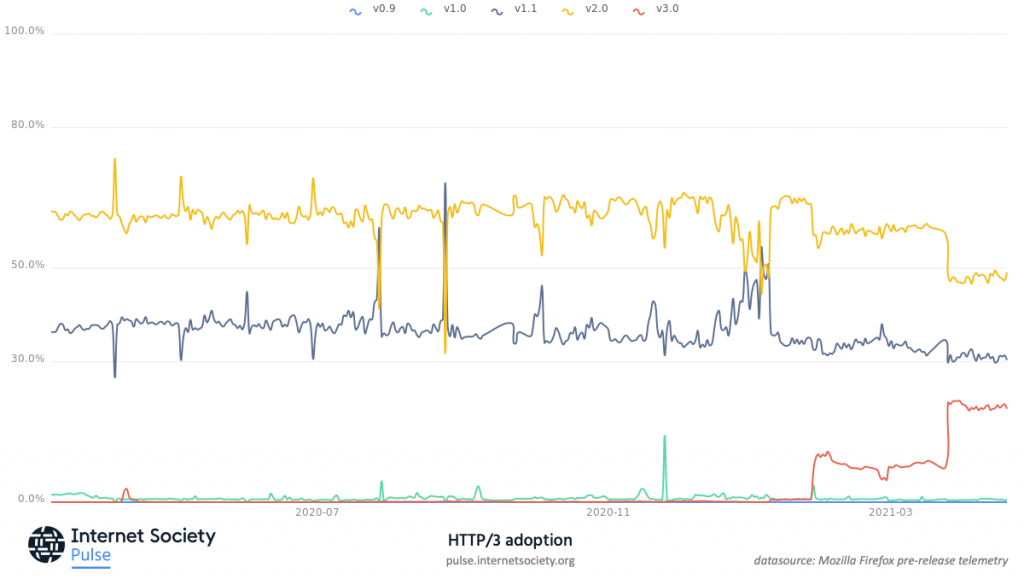After 5 years of discussing, coding and testing, and 34 revisions to the draft specification, a new version of the technology underpinning the web, and many other Internet applications these days, is nearly ready for publication by the IETF and more widespread adoption.
Hypertext Transfer Protocol (HTTP) serves as the foundation of data communication for the World Wide Web, where hypertext documents include hyperlinks to other resources that web users can easily access. HTTP/3 is the latest revision of HTTP. HTTP/3 marks quite a radical departure from the past by adopting a completely new transport protocol, QUIC, to improve the security and performance of communication and to reduce the time it takes to establish a connection.
The main features of QUIC are minimising connection delays for applications such as HTTP/3, allowing multiple connections to share bandwidth effectively, and providing always-secure transport using TLS 1.3. QUIC and HTTP/3 are part of a bundle of documents (Cluster C430 to be precise) that are now with the RFC Editor in the final stages of publication. As a consequence, we’re starting to see signs of increased HTTP/3 (and QUIC) adoption.

The step changes in adoption of HTTP/3 seen in the graph above (based on data from Mozilla Firefox pre-release telemetry) suggest some major content sources have recently enabled HTTP/3 by default for their traffic.
As recently reported on the Mozilla Hacks blog, support for QUIC and HTTP/3 is now enabled by default in Firefox Nightly and Firefox Beta. Mozilla is planning to start rollout for all users in Firefox Stable Release 88. HTTP/3 will be available by default for Firefox users by the end of May. Google Chrome and Microsoft Edge have had support enabled by default since 2020. Apple’s Safari browser has HTTP/3 support since version 14, but it is currently disabled by default. Expect that to change real soon now.
The ability for the Internet to embrace HTTP/3 is a measure of the Internet’s capacity to keep evolving and supporting new applications. As the Internet has matured, deploying new protocols to improve performance and security can be difficult. The introduction of a new transport protocol for something as popular and important as HTTP is a real test of the capacity of today’s Internet to continue to support growth and innovation. We hope to see the numbers for HTTP/3 adoption continue to climb in the coming months.
Photo by Bill Oxford on Unsplash


